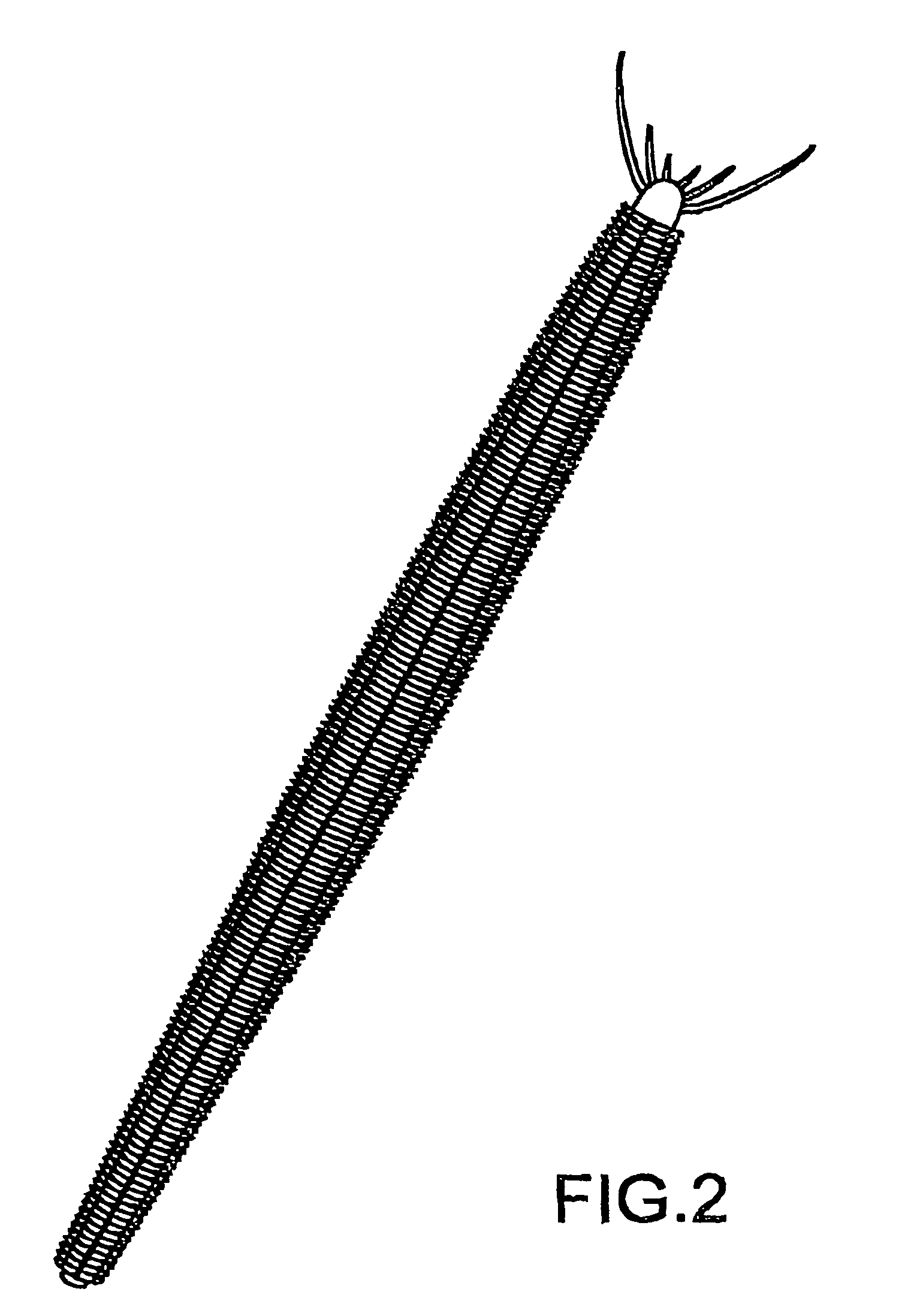Universal fishing bait based on fibrous collagen and the procedure for its preparation
a fibrous collagen and bait technology, applied in the field of fishing baits, can solve the problems of inability to use these baits as bait for the hook of a rod, inconvenient storage of these baits, and inability to use them as bait in the trap of fish or crustaceans, etc., to achieve convenient storage, easy manipulation and transport, and optimise and simplify the production process
- Summary
- Abstract
- Description
- Claims
- Application Information
AI Technical Summary
Benefits of technology
Problems solved by technology
Method used
Image
Examples
example 1
[0162] An aqueous dispersion of fibrous collagen reconstituted, obtained from bovine hides by the methods described in the section “Preparation of the precursor paste”, is adjusted to a pH of 3.0 to provoke its maximum swelling by hydration of the collagen. It is then submitted to a process of grinding in a colloidal mill and mechanical removal of the fibres until a homogeneous concentrated collagen paste is obtained (composition A).
example 2
[0163] Starting from composition A obtained as described in example 1, a quantity of glycerol is incorporated into the paste as a plasticiser, equivalent to 12% of the dry weight of the collagen. To the resulting paste, a coloured additive suitable for use in foodstuffs is added, such as the carmine (E120) (Sancolour S. A., Barcelona, Espan a), a quantity equivalent to 1% by weight of the dry weight of the collagen; a preservative such as potassium sorbate (E202) in an quantity equivalent to 3% by weight of the dry weight of the collagen, and a lubricant such as the oil Durkex 500 (Loders Croklaan, Wormeveer, Holanda) at 5% by weight of the dry weight of the collagen. The resulting precursor paste (2) is mixed with a solution of 50% pure 1,5-pentadial (BASF AG Imhof und Stahl GmbH Manheim, Alemania) in sufficient quantity such that the 1,5-pentadial reaches 1.25% of the dry weight of the collagen, with the object of forming a gel out of the collagen mix. The collagen content of the ...
example 3
[0169] Starting from the paste from the Example 1 (composition A), materials are subsequently incorporated into this paste such as strengthening agents, a quantity of cellulose equivalent to 15% of the dryweightof the collagen, and 15% byweight of glycerol of the dry weight of the collagen. Further additives were included: colorants such as the caramel (E 150a) at 8% of the dry weight of the collagen in C; the preservative Sodium Benzoate (5% p / p), Durkex 500 oil (8% p / p), and the aroma of marine worms (extract of Nereis sp. 6,85% by weight of dry collagen). Prior to the extrusion, a crosslinking substance such as formaldehyde (37% solution, Brenntag Chemiepartner GmbH, Heilbronn, Alemania) was added to a concentration of 18,4% of the dry weight of the collagen. Finally the paste was diluted to adjust the collagen content to 7,3% by weight of the total weight of the mixture (composition C). The dilution was performed in a vacuum in order to eliminate the air from the mass and decrea...
PUM
| Property | Measurement | Unit |
|---|---|---|
| Fraction | aaaaa | aaaaa |
| Percent by mass | aaaaa | aaaaa |
| Percent by mass | aaaaa | aaaaa |
Abstract
Description
Claims
Application Information
 Login to View More
Login to View More - R&D
- Intellectual Property
- Life Sciences
- Materials
- Tech Scout
- Unparalleled Data Quality
- Higher Quality Content
- 60% Fewer Hallucinations
Browse by: Latest US Patents, China's latest patents, Technical Efficacy Thesaurus, Application Domain, Technology Topic, Popular Technical Reports.
© 2025 PatSnap. All rights reserved.Legal|Privacy policy|Modern Slavery Act Transparency Statement|Sitemap|About US| Contact US: help@patsnap.com


